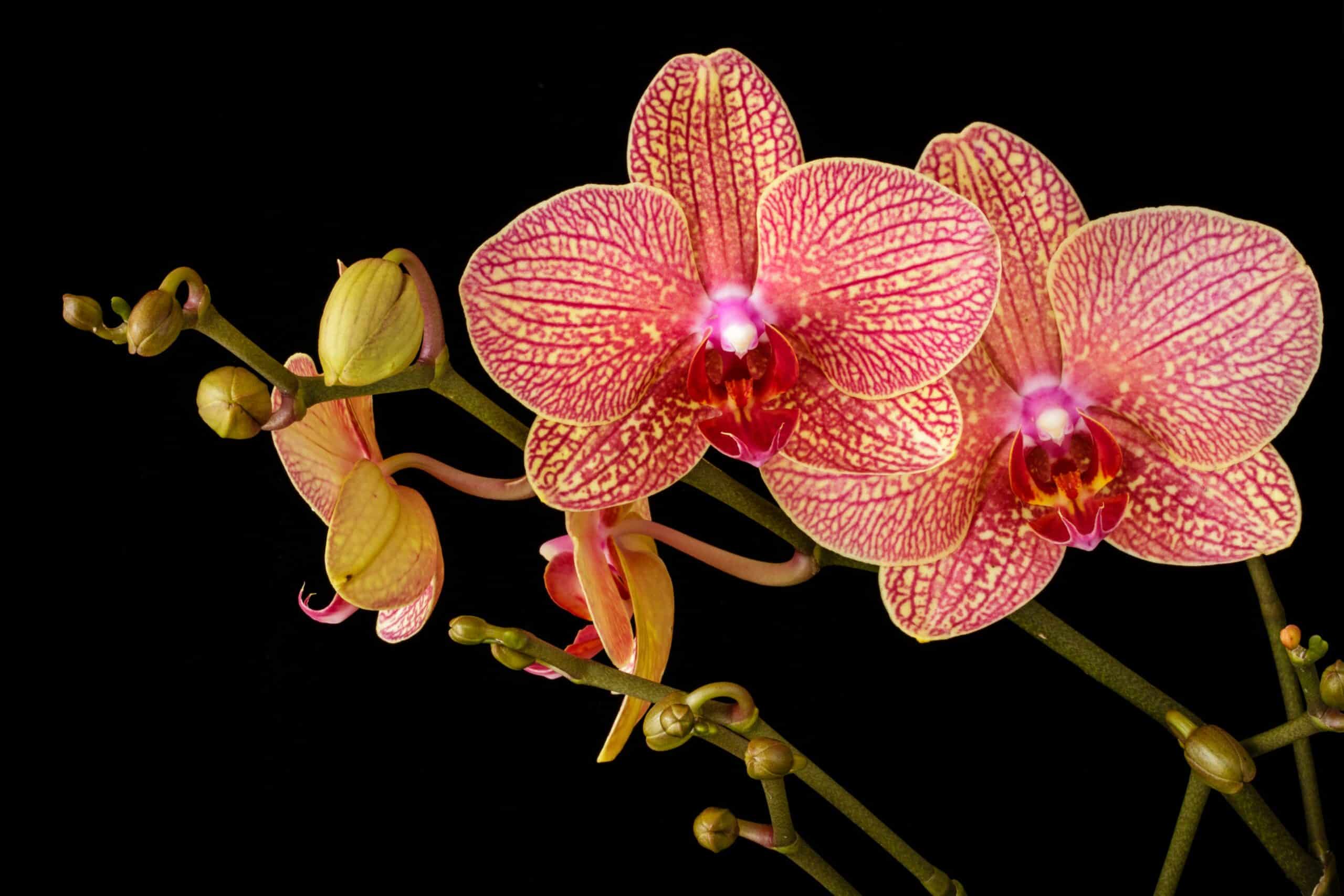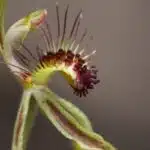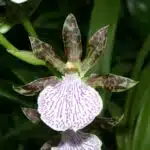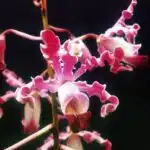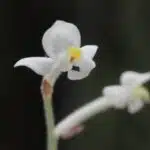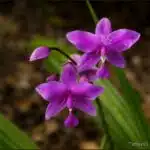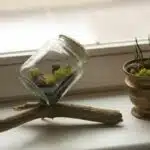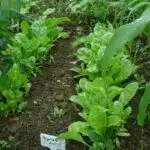You reap what you sow” is an adage that has been used for centuries to convey the importance of taking care when planting and tending to your garden. As a specialist in botany and gardening, I understand how important it is to select the right growing material for your orchid plants. In this article, I will discuss the various types of orchid growing materials available and provide advice on how to choose the one that best suits your needs.
Orchids are among the most popular plants to grow at home because they are easy to care for and can last for years with proper maintenance. To ensure that your orchids thrive, it’s essential that you carefully consider which type of orchid growing material you use. This guide will help you decide which option is best suited for your orchid’s needs so that you can enjoy their beauty and longevity for many years.
As someone who loves to serve others through my work, I am passionate about providing information on how to properly care for plants. In this article, I will explain how different orchid growing materials affect plant development and provide tips on choosing the right one for your home garden. Hopefully, after reading this guide, you will have all the tools you need to make an informed decision about which type of orchid growing material is best suited for your plants’ needs.
Types Of Orchid Growing Materials
Orchids are a symbol of beauty, elegance and resilience. They are considered the royalty of the plant kingdom. It takes special care to cultivate them in their best form. To do this, one needs to choose the right growing medium for their orchids. There are several types of growing media available that can be used for orchid cultivation, each with its own benefits and drawbacks.
The main types of growing media for orchid cultivation include soil-based mixes, bark-based mixes, and soilless mixes. Soil-based mixes offer support and nutrition while providing good drainage capabilities. However, they may contain pests and diseases which can be detrimental to orchid health. Bark-based mixes are ideal for areas with high humidity levels as they offer a balance between aeration and moisture retention. On the other hand, soilless mixes are lightweight and provide excellent drainage without attracting any pests or diseases.
Each type of growing medium has its own advantages depending on the environment where the orchids will be grown in and what kind of health results one is looking to achieve from their plants. Ultimately though, it is up to the grower to determine which medium will work best for them based on their individual needs. A thorough understanding of each type’s characteristics can help make an informed decision about which medium will yield the best results for cultivating healthy orchids.
Benefits Of Using A Soilless Growing Media
With the abundance of options for orchid growing media, you may be asking yourself, what are the benefits of using a soilless growing medium? Before we dive into that, let’s look at how this type of material differs from traditional soil. A soilless media is a combination of organic and inorganic materials that provide an ideal environment for orchid roots to grow.
Unlike soil-based orchid growing mediums, soilless materials don’t contain any bacteria or fungi that can cause root rot and other diseases. They also don’t break down as quickly, providing less frequent changes required in substrate over time. Plus, they tend to have better moisture retention capabilities than soils which helps with root growth and overall plant health.
The airy texture of a soilless medium also helps keep roots aerated—especially important when it comes to epiphytic orchids—and makes them easier to re-pot than other types of growing mediums. TIP: When selecting a soilless growing media, look for one that contains elements like bark chips, charcoal, coconut husks and/or sphagnum moss—all of which will help retain moisture and provide nutrition for your orchid’s needs.
What To Consider When Choosing An Orchid Growing Medium
Choosing the right orchid growing material is an essential step to creating a healthy and vibrant environment for your orchid to thrive. It may seem like a daunting task, but with a little research, you can easily find the perfect medium for your beloved plant. Let’s take a look at what to consider when selecting the best growing material for your orchid.
One of the most important aspects of choosing an orchid growing medium is understanding the different types of materials available. Some popular options include bark, cork, coconut husks, sphagnum moss, charcoals and perlite. Each of these materials has its own unique benefits and drawbacks that must be considered when selecting one. For example, bark is often preferred due to its light weight and ability to retain moisture well, however it can also tend to break down quickly in comparison to other materials.
Another factor you should consider when choosing an orchid growing medium is drainage capabilities. Different plants require different levels of water drainage based on their individual needs; some need more water while others require less. It’s important that you select a material that allows for adequate water drainage in order to ensure optimal growth conditions for your orchid. Additionally, make sure you select one with enough air pockets so that oxygen can reach the roots for proper respiration and nutrient uptake.
TIP: Always read up on the specific needs of your particular species before selecting an appropriate growing medium as this will help ensure that you provide them with everything they need for optimal growth!
Choosing A Potting Mix For Orchids
When it comes to orchid cultivation, selecting the right growing medium can be a challenge. From potting soils to bark mixes, choosing the best option requires knowledge of types, characteristics and benefits. Here are 4 key points to consider when selecting a potting mix for orchids:
Firstly, you need to decide whether your orchid needs an organic medium such as mosses and bark or an inorganic medium like perlite and vermiculite. Each type has its own advantages and disadvantages. Organic materials tend to retain more moisture and provide better air circulation while inorganic materials provide good drainage and help keep roots healthy.
Secondly, you should consider the type of orchid you are cultivating. Different species require different potting mixes that will provide them with essential nutrients. For instance, Phalaenopsis orchids prefer a medium made up of fir bark while Cattleya orchids need a mixture of peat moss and perlite.
Thirdly, it is important to make sure that your chosen material is free from pests and diseases before you use it for your plants. Avoid buying any material which looks suspicious as it could harm your plants’ health if used improperly. Finally, make sure that the material is sterile so that it does not introduce new pathogens into your garden environment.
By taking into account these factors, gardeners can easily choose the best potting mix for their beloved orchids – one that suits their specific needs as well as providing optimal growth conditions for their plants. With this in mind, let’s look at how to choose an organic medium for orchids…
Choosing An Organic Medium For Orchids
Organic medium for orchids is like a secret garden, lush and vibrant with bright blooms. It’s perfect for growing these delicate flowers, providing the ideal environment for their growth and development.
As an experienced botanist and gardener, I know that choosing the right organic medium is essential to ensure your orchid thrives. Organic materials such as bark, moss, coir, charcoal, sphagnum peat moss, and compost provide excellent drainage while also maintaining moisture levels and providing essential nutrients to the plants’ roots.
When selecting an organic medium for your orchid, consider factors such as pH balance, aeration capabilities and water retention. Also take into account the type of orchid you have – some prefer drier conditions while others require more moisture – so tailor your mix accordingly. Additionally, make sure to choose a potting mix that is pesticide-free and doesn’t contain any artificial fertilizers or chemicals that could harm the plant. With these tips in mind, you can be confident in finding the perfect organic medium for your orchid!
Choosing An Inorganic Medium For Orchids
Choosing the right orchid growing material is a crucial part of successfully cultivating beautiful and healthy blooms. It is like selecting the right type of soil for planting a garden – you must consider the needs of your particular species before settling on a medium. For those looking to use inorganic mediums, there are several options to choose from, each with their own unique benefits.
When considering an inorganic medium for orchids, it is important to understand the different characteristics and qualities of each option. Sphagnum moss is lightweight and provides excellent drainage and aeration, making it ideal for epiphytic varieties. Coconut husk chips offer good moisture retention, which can be beneficial for terrestrial varieties as well as some epiphytes that prefer higher humidity levels. In addition, bark chips are also an option; they are lightweight and provide good drainage but may need replacement more frequently than other types of media.
TIP: Before deciding on a particular type of inorganic orchid growing medium, consult with knowledgeable sources such as your local nursery or botanical garden to determine what type would be best suited to your particular plant’s needs. Once you have made your selection, make sure to regularly check the media’s moisture level and adjust accordingly – too much water can cause root rot while too little can lead to stunted growth.
What’s The Difference Between Potting Mix And Orchid Growing Media?
It is absolutely essential to be able to differentiate between potting mix and orchid growing media when selecting the optimal medium for orchid cultivation. It’s an incredibly important choice, as it will determine the success of the plant! In this section, we will explore the differences between these two materials and provide some considerations for using coconut husk chips as a growing medium.
When it comes to selecting media for growing orchids, there is a world of difference between potting mix and orchid growing media. Potting mixes are usually composed of peat moss, perlite, vermiculite and other organic materials such as composted bark or composted cow manure. These mixes are designed to hold water while providing a loose texture that allows roots to grow easily. Orchid growing media, on the other hand, typically consists of fir bark, charcoal, sphagnum moss, tree fern fiber and other inorganic ingredients that promote drainage and aeration.
Both potting mix and orchid growing media provide unique benefits for different types of orchids; however, it’s important to understand that not all varieties will thrive equally in either medium. In particular, some species may require a more specialized approach such as using coconut husk chips in combination with traditional materials like fir bark. Coconut husk chips can provide additional aeration and retain moisture better than traditional ingredients alone – making them an ideal choice for certain species of orchids.
When considering coconut husks for your orchid-growing needs, it’s important to consider factors such as pH level (5-6 is best), particle size (must be small enough not to block air flow but large enough to hold moisture), nutrient content (higher nutrient content helps maintain vigorous growth) and cost (coconut husk chips can be expensive compared to other materials). With these considerations in mind, you should have no trouble finding the perfect medium for your beloved plants!
Considerations For Using Coconut Husk Chips For Orchid Growing Media
The orchid is one of the most beloved plants in the world, and cultivating them requires some thought and consideration. One of the key decisions for any orchid grower is selecting the right growing media, which can have a significant impact on the success of an orchid garden. With that in mind, let us explore one particular option – coconut husk chips – to determine its appropriateness for an orchid’s needs.
Coconut husk chips are a popular choice among orchid growers due to their natural ability to hold moisture while also offering some drainage. The chips also tend to retain air pockets, providing aeration and allowing oxygen to reach the roots more easily. This balance between water retention and drainage makes coconut husk chips a viable option for many growers who want a medium that will help their orchids thrive.
However, it is important to consider potential drawbacks before utilizing coconut husk chips as an orchid growing medium. Coconut husk chips tend to break down quickly over time so they must be replaced regularly; they may also introduce pests into your garden if not properly treated prior to use. Additionally, coconut husks can become acidic when wet and may need regular pH adjustments with lime powder if used in high concentrations.
In light of these considerations, it is worth exploring other options for growing media before deciding on coconut husk chips as the material of choice for your orchid garden.
Considerations For Using Sphagnum Moss For Orchid Growing Media
When it comes to cultivating orchids, sphagnum moss is one of the most popular materials available. Its absorbent and lightweight qualities make it an ideal choice for growing these delicate flowers. Like a sponge, sphagnum moss soaks up water and retains it; this ensures that your orchid’s roots will stay moist and healthy for longer. Additionally, the airy nature of sphagnum moss allows for aeration of the soil and better circulation of oxygen around the roots.
As with any other material used for orchid growing media, there are some considerations to bear in mind when using sphagnum moss. Firstly, it can be difficult to source genuine quality sphagnum moss; cheaper options may have been harvested from peat bogs which are damaging to local ecosystems. To ensure that you’re getting a sustainable product, it’s best to purchase from reputable sellers who can guarantee its origin. Secondly, due to its absorbent properties, sphagnum moss can dry out quickly if not watered sufficiently; this means that you must be prepared to provide regular waterings in order to keep your orchids flourishing.
Finally, while sphagnum moss has many benefits as a growing medium for orchids, there are other materials available which may suit your needs better depending on the type of environment you’re trying to create for your plants. It pays to do research into all possible options before deciding which is most suitable for you and your flower friends! With careful consideration given beforehand, choosing the right material is sure to help you grow beautiful blooms that will last year-round.
Considerations For Using Perlite For Orchid Growing Media
It is estimated that around 25,000 species of orchids exist in the world, making them one of the most diverse plants on the planet. As such, it is important to ensure that they are grown with the right materials for proper health and longevity. One type of material often considered for orchid growing media is perlite.
Perlite is an incredibly lightweight material made from volcanic rocks that have been heated until they expand and form a foam-like substance. It has excellent water retention properties and provides great airflow for root growth. This makes perlite an ideal choice for orchid growers seeking to increase drainage and ventilation for their plants. Additionally, due to its light weight, it can easily be mixed with other growing materials without overburdening your orchids’ roots.
However, there are a few considerations when using perlite as orchid growing media. Since it is so lightweight, it can easily be displaced by watering and cause some nutrient deficiencies if not added into a mix with other materials like bark chips or coconut husks. Also, due to its low pH level, some species of orchids may not do well in this environment. Therefore, it’s important to research the particular needs of your chosen species in order to determine if perlite is suitable for them before going ahead with this material option.
Moving forward, clay pebbles can also be used as a growing medium for certain types of orchids providing good aeration and drainage while allowing excess water to evaporate quickly from the surface. We will discuss the considerations for using clay pebbles next.
Considerations For Using Clay Pebbles For Orchid Growing Media
Coincidentally, the 11th consideration for orchid growing media is clay pebbles. This porous material offers many benefits to orchid growers looking to produce strong, healthy plants. It’s also a great choice for anyone wanting to enhance the look of their space with vibrant colors and unique textures.
Clay pebbles provide excellent drainage, holding onto just enough water and nutrients to keep your plants’ roots hydrated and nourished. The pebbles also provide a generous surface area for beneficial bacteria to live, which helps break down organic matter and make it more available for your plants’ roots. The air pockets in between the pebbles also help promote oxygenation of the substrate, ensuring that your orchids get enough oxygen at their roots as well.
There are a few drawbacks associated with using clay pebbles as an orchid growing medium. For example:
- pH levels can be difficult to control: Clay is naturally alkaline, so it may be necessary to adjust pH levels by adding acidic materials like bark chips or sphagnum moss.
- Potential contamination: Make sure you purchase clay pebbles from a reputable source to avoid any potential contaminants like soil-borne diseases and pests.
- Cost: Clay pebbles are generally more expensive than other types of growing media, so consider whether this option makes sense for your budget before investing in them.
Overall, however, clay pebbles can be an effective and attractive medium for growing orchids as long as you take the necessary precautions to ensure optimal growth conditions.
Considerations For Using Vermiculite For Orchid Growing Media
Vermiculite is a popular choice for growing orchids, as it offers some advantages over other types of growing media. It is lightweight and has a neutral pH level, making it suitable for most varieties of orchids. It also retains moisture well and can provide good drainage. Although its water-retention properties make it an attractive growing medium, there are some important considerations to make when using vermiculite for orchid growing media.
First, vermiculite is more expensive than other types of orchid-growing media, such as clay pebbles or rockwool. Additionally, it tends to break down more quickly than other materials and may need to be replaced more often. When purchasing vermiculite, it’s important to buy from a reputable supplier and check that the product is free from disease-causing pathogens.
Finally, when using vermiculite for orchid growing media, it’s essential to ensure that the material isn’t too tightly packed in the container. This could lead to poor air circulation and reduce the effectiveness of the medium as a growing environment. Instead, create spaces between the clumps of vermiculite so that air can circulate freely around the roots of your plants. With proper use and care, vermiculite can provide an excellent source of moisture and drainage for your orchids.
The use of rockwool as an orchid-growing medium offers many advantages over other materials; however, this type of material should be used with caution due to its high pH level and tendency to retain water too long. A careful evaluation of these factors must be done before deciding if rockwool is right for your particular situation.
Considerations For Using Rockwool For Orchid Growing Media
Gardening with rockwool? Surely, that’s a joke! After all, it is more often associated with construction and insulation than with gardening. But for those who understand its potential for orchid growing media, rockwool can be a great choice. Here are some considerations to keep in mind when using this unusual growing material.
First off, rockwool is a type of hydroponic grow medium made from spun basaltic rocks and chalk. It’s sterile and does not contain any nutrients, so you will need to add them manually as needed. Additionally, rockwool retains moisture very well; however, because it is so absorbent, it can dry out quickly if not watered regularly or adequately fertilized. You’ll also want to be aware of the pH levels when adding nutrients since they can change rapidly in this medium.
Rockwool comes in various sizes and shapes so you can easily fit it into your growing setup. Plus, it is lightweight so handling and shipping costs are low. One final consideration: even though rockwool is highly resistant to fungi and bacteria, you should still take precautions like soaking new pieces before using them in your garden to prevent root rot and other diseases from entering your plants’ environment.
All things considered, rockwool could prove an interesting choice for those looking to try something different when selecting an orchid growing medium. But before making your decision on whether or not this option is right for you, consider what type of environment would best suit your orchids’ needs – then go from there!
Considerations For Using Oasis Cubes For Orchid Growing Media
Little did we know that choosing the right orchid growing material could be so…irreverent! With such a wide variety of materials available, it’s no surprise that selecting the right one can be a daunting task. That being said, let’s take a closer look at considerations for using oasis cubes for orchid growing media.
Oasis cubes are an excellent choice due to their lightweight, airy nature that allows for optimal water retention while still providing good drainage. This makes them ideal for providing adequate moisture and ventilation, as well as giving roots plenty of room to grow and spread out. Additionally, they can be easily re-used and last for multiple seasons if cared for properly.
However, there are some drawbacks to keep in mind when considering oasis cubes. For instance, they are more expensive than other options such as bark or moss and may require more frequent changing than those materials. Furthermore, they don’t hold onto nutrients very well so additional fertilizer may need to be added more regularly than with other materials.
Overall, oasis cubes provide a great option for anyone looking for a lightweight and airy medium without sacrificing water retention capabilities or root space. With these factors in mind – along with an understanding of the potential drawbacks – it’s clear why oasis cubes remain a popular choice among orchid growers. Now let’s move on to tips for successful orchid growing media selection!
Tips For Successful Orchid Growing Media Selection
When it comes to orchid growing media selection, there are a few tips to keep in mind. Firstly, it’s important to know what kind of media is suitable for the type of orchid you’re trying to grow. Different species will require different types of growing media, and not all media is suitable for all types. For example, certain species may do better in bark-based mixes than others might.
It’s also important to consider environmental factors when selecting a growing medium. This includes things like light levels, temperature, humidity and even air circulation. Knowing these factors can help you choose a media that best suits your orchid’s environment. Additionally, it’s important to make sure that the medium is well-draining so that excess moisture doesn’t build up and cause root rot.
Lastly, you should always do your research before selecting an orchid growing medium – especially if you’re buying one from a store. Make sure to read up on reviews and ratings of any particular product before making a purchase so that you can ensure its quality and suitability for your orchid’s needs. With these tips in mind, you’ll be able to successfully select the best orchid growing medium for your plants!
Frequently Asked Questions
What Are The Best Orchid Growing Materials For Beginners?
For those new to the world of orchid growing, it can be overwhelming to decide which material is best. While there are several options available, choosing the right one for your particular needs is essential if you want to ensure success. Fortunately, specialists in botany and gardening have identified certain materials as particularly suitable for beginners.
When selecting an orchid growing material, look for something that offers a good balance between water retention and aeration. Coconut husk chips, bark pieces and sphagnum moss all provide great drainage while still maintaining moisture levels. Many novice growers also find that these materials are easy to work with and don’t require frequent repotting.
These days there is also a variety of commercial potting mixes available for orchids made from mixtures of different types of organic matter such as vermiculite, perlite and peat moss. These blends offer excellent air circulation, water retention and nutrient absorption capabilities which make them very popular among beginner orchid growers. If you’re feeling overwhelmed by the choices available on the market then consider consulting a specialist in botany and gardening who will be able to advise you on which type of mix is most suitable for your specific variety of orchid.
With the right knowledge and equipment at hand, any aspiring gardener can cultivate beautiful blooms with minimal fuss!
How Do I Know Which Type Of Orchid Growing Medium Is Right For My Plant?
Choosing the right orchid growing material can be a daunting task for beginners. With so many options, it’s hard to know which medium is best suited for your plant. But don’t despair! The answer lies in understanding the needs of your orchid and finding the right combination of materials to match them. Like an artist with a palette, you can create a masterpiece when it comes to growing your own orchids.
Let’s start by considering the type of orchid you have. Different species require different types of media, from bark-based substrates to sphagnum mosses and even charcoal. Once you’ve identified your orchid type, it’s time to think about the various components that make up each medium. You’ll need to decide on drainage and aeration elements as well as moisture retention characteristics such as humidity and water absorption capacities. It’s like putting together a jigsaw puzzle – but when you get it just right, it will provide the ideal conditions for your orchid to thrive.
To help simplify things further, consider using pre-mixed media formulated specifically for different types of orchids – they take all the guesswork out of creating a custom mix. And like painting by numbers, these pre-made mixes are designed with specific needs in mind; ensuring that all essential elements are present in just the right amounts for success! So whether you’re new to gardening or an experienced green thumb, with a little know-how and some trial and error, finding the perfect medium for your beloved blooms is within reach.
What Is The Best Soil Mix For A Specific Type Of Orchid?
Growing orchids successfully requires having the right soil mix. Knowing which mix is best for a specific type of orchid can be difficult, but it’s essential to get it right if you want your plants to thrive. So, let’s look at what makes up the perfect soil mix for a particular type of orchid:
First off, there are three components you need to consider when choosing a soil mix for an orchid. These are: drainage, aeration and nutrition. The drainage should be appropriate for the species of orchid you’re growing; some prefer more moisture, while others need good air circulation and dryness. Aeration helps ensure that oxygen reaches the roots and promotes healthy growth as well as water retention in the soil. And lastly, nutrition is provided by adding organic matter such as bark chips, compost, humus and other slow-release fertilizers.
Next, it’s important to understand the plant’s requirements before selecting a soil mix. Some orchids prefer clay-based soils while others need coarse materials like pumice or perlite to help with drainage and aeration. Additionally, certain types of orchids require special mixes that contain extra nutrients such as calcium carbonate or lime dust to help them thrive. You should also check your local garden store for pre-mixed blends specifically designed for certain types of orchids.
No matter what type of orchid you’re growing, finding the right soil mix is vital to its success. By taking into account each plant’s needs and researching different options available on the market today, you can ensure your beautiful blooms will flourish!
How Often Should I Replace Orchid Growing Media?
Replacing orchid growing media is an important part of nurturing your orchid plants for the best results. How often you should replace the material, however, depends on the particular type of orchid and growing medium you’re using. Generally, it’s best to check every six months to assess the condition of your media and determine if a replacement is necessary.
Soil-based mixes are generally considered to be ideal for most types of orchids and should typically be replaced every one to two years. If you use bark, it’s recommended that you refresh it at least annually. This can be done by removing a portion (about one third) of the old mix and replacing it with new material. It’s also important to note that organic materials such as sphagnum moss, coir, and peat moss will break down over time and need to be replaced more frequently than inorganic materials like bark.
It’s essential that all used media is removed from the pot before adding new material, as this will help prevent diseases from spreading between batches. Those who like to repot large numbers of orchids at once may find it helpful to invest in an automated potting machine which can quickly mix up fresh growing media for each plant while ensuring all materials are properly mixed together. As a botanist and gardener, I can attest that taking care when selecting and replacing your orchid growing media will not only result in healthier plants but also provide peace of mind that your beloved flowers are getting everything they need for optimal growth!
What Are The Potential Risks Associated With Using A Particular Orchid Growing Material?
When selecting an orchid growing material, there are potential risks to consider. This includes the potential for bacterial or fungal infection, compaction of the material, and salt build-up over time. Here is a list of the potential risks associated with various types of orchid growing media:
• Bacterial or fungal infection: Organic materials such as bark can be prone to harboring bacteria and fungi. • Compaction: Clumping materials such as sphagnum moss can become compacted and limit air flow around the roots. • Salt Build-up: Materials that contain fertilizers can cause salt buildup which can prevent nutrient uptake. • pH Imbalance: Materials that are too acidic or alkaline can affect the ability of the plant to take up nutrients from the soil.
It’s important to select an appropriate medium for your specific type of plant in order to avoid these risks. For example, epiphytic plants prefer woody media like bark chips or cork while other plants may require a more balanced mix of organic and inorganic components for optimal growth. Additionally, some materials are better suited for hydroponic applications than others. Once you have selected a suitable medium for your specific orchid species, it is recommended that you monitor soil conditions regularly and replace it periodically if needed in order to reduce any long-term risk factors from developing.
The selection of a suitable orchid growing material requires careful consideration of the specific needs of each particular species and monitoring soil conditions over time to ensure optimal growth and health of your plants. With this knowledge, you will be able to provide your plants with the right environment they need to thrive!
Conclusion
In conclusion, choosing the right orchid growing material is an important part of ensuring that your plant is healthy and thriving. There are a variety of options available to suit different types of orchids, from light and airy materials to more dense soil mixes. It is important to consider factors such as drainage, aeration and water retention when selecting the appropriate medium for your particular species.
For example, if you have a Phalaenopsis orchid, you may choose to use a coarse bark mix to ensure adequate drainage and aeration for roots which tend to remain near the surface of the media. On the other hand, if you have an Epidendrum species, then it might be beneficial to use a combination of sphagnum moss and perlite in order to provide the optimum environment for its deeper-rooted structure.
Finally, it is important to remember that all orchid growing media should be replaced periodically in order to prevent disease and maintain optimal conditions for your plants’ health. With the right knowledge and selection of materials, you can create an ideal environment for your orchids to thrive in!

